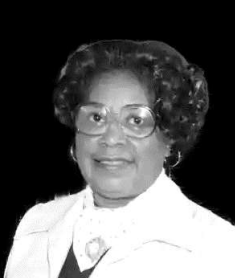Mary Winston Jackson was born on April 21, 1921 in Hampton, Virginia. She grew up in Hampton where she was an honor graduate of George P. Phenix High School. In 1942, Mary earned her Bachelors of Science Degree from Hampton Institute, majoring in Mathematics and Physical Science. At Hampton Institute she became a member of the Alpha Kappa Alpha Sorority, Incorporated. Immediately following Mary’s graduation she took her first job as a teacher at a black school in Calvert County, Maryland. After only a year of teaching math, Mary returned home to Hampton where she worked as a bookkeeper for the Hampton Institute Health Department and as a secretary at Fort Monroe Army installation. It was in 1951, when Mary began her pioneering career in Engineering and employment in the segregated Laboratory Computing section (West Area Computing) at Langley Memorial Aeronautical Laboratory.
Mary worked in the computing pool for two years until she received an offer to work with the engineers on the 4-foot by 4-foot Supersonic Pressure Tunnel, a 60,000 horsepower wind tunnel capable of blasting models with winds approaching twice the speed of sound. As part of this training program, Mary had to take evening graduate courses. The courses were managed by the University of Virginia at the local white only Hampton High School. She received special permission to take the courses, which she completed, earning her a promotion to be NASA’s first Black female engineer in 1958.
As a mathematician and aerospace engineer, Mary went on to lead programs influencing the hiring and promotion of women in NASA’s science, Technology, Engineering, and Mathematics careers. She not only broke down racial barriers for herself, but was a trailblazer for many other Black women to be able to have careers in STEM. Mary’s 34 year career is well decorated to include, Apollo Group Achievement Award, Langley’s Volunteer of the Year, and the Congressional Gold Medal. Mary’s name is honored in several buildings such as Mary W. Jackson Elementary School in Hampton, Virginia and Salt Lake City, Utah. NASA honored her legacy by naming their new Washington Headquarters after her and the newly erected community center in Hampton was named the Mary W. Jackson Neighborhood Center. In 2020, NASA launched a satellite, “Mary”, into space.
Mary’s legacy to the field of engineering despite significant racial barriers is well documented and popularized by the film Hidden Figures. To those who knew her well, she will also be remembered as the loving and passionate pillar of the community who used her spare time to lead a Girl Scouts troop for 30 plus years and tutor the local youth in math and science.

